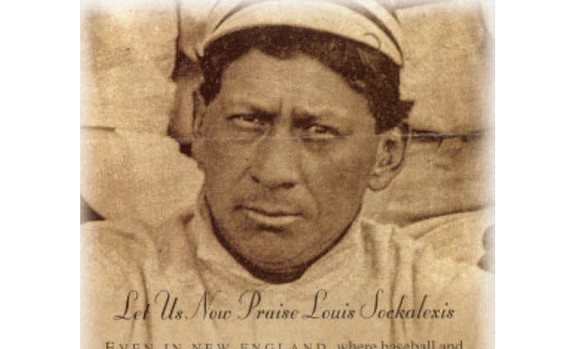Cleveland Indians got nickname from first Native American in MLB
Fred Jeter | 10/30/2016, 1:32 p.m.
Before there was Jackie Robinson, there was Louis Sockalexis.
In 1947, Robinson broke Major League Baseball’s ban on African-Americans.
Fifty years prior in 1897, Sockalexis — known as “Deerfoot on the Diamond” — became big league baseball’s first Native American player when he debuted with the Cleveland Spiders.
At least indirectly, the Cleveland Indians got their nickname from Sockalexis.
Informally, the team was called the “Indians” in the late 1890s when exciting outfielder/leadoff hitter Sockalexis was in manager Patsy Tebeau’s lineup.
Although his career was marred by injury and alcoholism, Sockalexis hit .313 while playing 94 games for Cleveland during the 1897, 1898 and 1899 seasons.
The team became known as the “Naps” in the early 1900s because of the presence of Hall of Fame slugger Napolean “Nap” Lajoie.
Following Lajoie’s departure in 1914, the team officially was renamed Indians after owner Charles Somers consulted with area sports writers and fans.
The son of Chief Francis Sockalexis, Louis Sockalexis was born in 1871 on the Penobscot Indian Island Reservation in Maine. Demonstrating remarkable athleticism as a child, he won footraces and throwing contests on the reservation and, by his late teens, was playing semipro baseball in New England.
Raised Roman Catholic, he played two seasons at College of the Holy Cross in Worcester, Mass. Two of the Holy Cross coaches at the time played for Cleveland and alerted ownership to Sockalexis’ talent.
His first game with Cleveland was April 22, 1897, at age 25, although he told management he was 23.
Like Robinson, Sockalexis was exposed to bigotry. In an 1897 report in The Sporting Life, author Elmer Bates wrote:
“He is hooted and bawled at by the thimble-brained brigade on the bleachers. Despite this handicap, the red man has played good, steady ball and has been a factor in all the victories.”
It wasn’t uncommon for opposing fans to mock the Native American with mean-spirited war whoops and war dances. Often on the road, newspapers depicted Sockalexis with stereotypical cartoon caricatures.
His promising career was never maximized. He suffered a severe ankle injury during the 1897 season. Upon retiring from baseball, he returned to Maine and worked as a logger. He died in 1913 of tuberculosis and heart ailments. He was 42.
Soon after, one of Sockalexis’ teammates, shortstop Ed McKean, was quoted in the Cleveland Leader:
“Louis was a wild bird. He couldn’t lose his taste for the firewater. His periodic departures became such a habit he finally slipped out of the majors.
“He had more natural ability than any player I have ever seen, past or present.”








